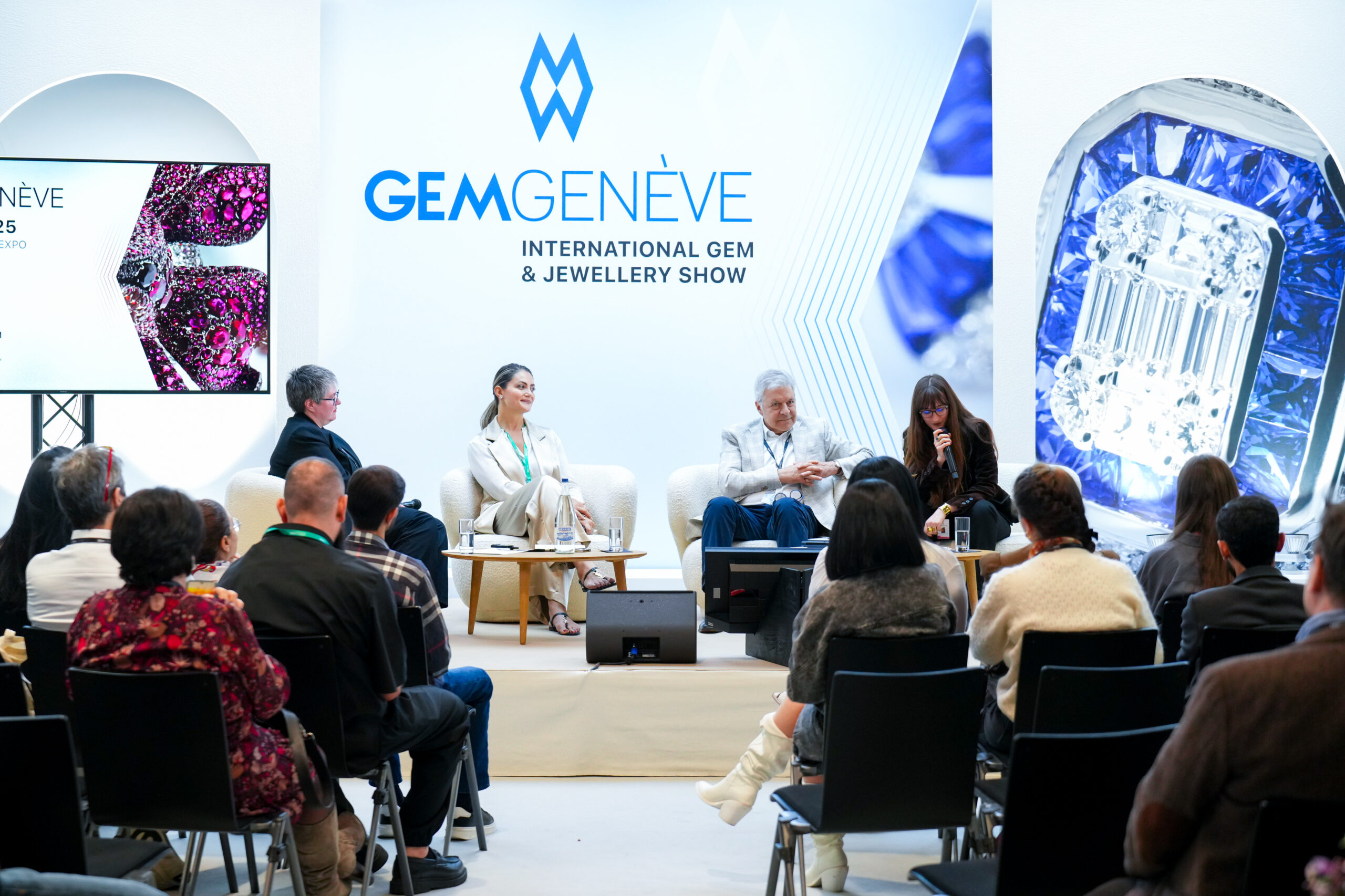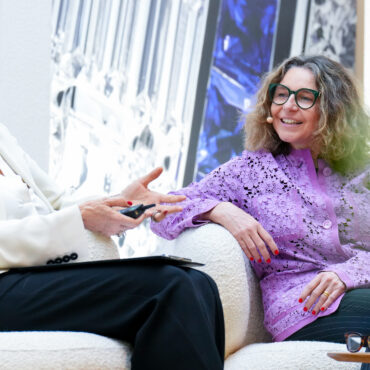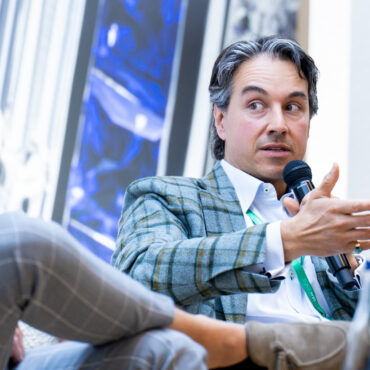During the latest GemGenève edition, last May 2025, one panel opened a rare journey into a heritage too often acknowledged in whispers but seldom explored in depth: the enduring link between jewellery and Armenian identity.
“Jewellery Culture and Armenian Heritage” brought together historian Fanny Balian, industry leader Vartkess Knadjian (CEO of Backes & Strauss) and Ivette Nersesyan-Stephanopoulos, President of the Armenian Jewellery Association, under the moderation of Marie Chabrol. Their discussion revealed not only the richness of a centuries-old story but also its pressing relevance for Armenia’s future.
Historical Roots: Armenians and the Diamond Trade
French historian Fanny Balian offered a captivating account of Armenians’ role in the global diamond trade during the 17th century. Along the Silk Road, Armenian merchants of New Julfa in Isfahan (Iran) built vast networks stretching from India to Europe. They became indispensable intermediaries, transporting diamonds from the Golconda mines to Mughal courts, Russian tsars, and European treasuries.
One extraordinary example was the golden throne set with over a thousand gems, presented in 1659 by merchant Zacharia Sarian Manian to Tsar Alexei of Russia. Such lavish gestures were not only symbols of wealth but tools of diplomacy, securing trade privileges for Armenian merchants on Russian routes.
Beyond diplomacy, Armenians rose to prominence within global institutions. Mara Hinz became a director of the French East India Company, while Beck, a lapidary and political advisor at the Safavid court, influenced both gem cutting and court policy. These figures illustrate how Armenians were not peripheral players but central actors shaping the gem economy.
All this was made possible because of their diasporic network, which allowed family firms to operate seamlessly from Surat to Amsterdam; their linguistic dexterity, mastering Persian, Portuguese, Italian, and Indian tongues; and their educational foresight, with schools in New Julfa teaching mathematics, accounting, and trade.
Importantly, jewellery at the time held a dual value: aesthetic and therapeutic. Diamonds were prized for brilliance, but stones like the bezoar were ground into powders to cure snake bites. Fanny Balian reminded the audience that gems were both luxury and medicine — carriers of beauty and protection alike.
This blend of commerce, culture, and symbolism laid the foundation for what we might call an early form of globalisation, in which Armenians were crucial architects.
Diaspora and Identity: ‘Armenianness’ Across Borders
If trade sustained Armenians materially, community life sustained them culturally. For Vartkess Knadjian, born in Ethiopia to an Armenian watchmaker, this was tangible: “We were Ethiopian, but we were always Armenian. We had the church, we had the community, and that was very important.” In cities from Penang to Singapore, Armenian diasporas built churches and schools that anchored identity while they integrated locally.
For Ivette Nersesyan-Stephanopoulos, now based in New York, jewellery work is inseparable from her sense of self: “Anything I do in the jewellery industry always finds a way to bring me back to my culture.” She described being moved by the persistence of Armenian communities abroad, where families who have never set foot in Armenia still speak the language, attend Armenian schools, and pass down traditions to new generations.
Jewellery in this sense is more than a craft: it is an anchor of identity, a livelihood that has allowed Armenians to preserve ‘Armenianness’ across centuries of displacement. As one panellist reflected, without this strong sense of community, Armenians “would have disappeared amongst other cultures.”
Journeys into Jewellery
Knadjian’s professional story intertwines with this legacy. Joining Backes & Strauss in 1976, he witnessed Antwerp’s diamond trade at its height, when Armenian families such as the Aslanians still controlled a major share of rough diamond distribution. Later, he led a management buyout and transformed the venerable diamond house into a high-end Swiss watchmaking brand in Geneva.
Ivette Nersesyan-Stephanopoulos took a different path. With roles at De Beers, GIA, and major US brands, she describes herself as a “connector rather than a maker” — someone who identifies talent and builds platforms for visibility. Her mission with the AJA is to ensure Armenian designers, wherever they are in the world, are recognised on international stages.
For historian Balian, the path was academic but no less personal. Expecting to find records on silk, she instead discovered that diamonds and gems were at the heart of Armenian mercantile history. That revelation reshaped her research — and now her PhD — into a quest to map this overlooked dimension of the Armenian diaspora.
The Soviet Legacy: Factories and Synthetic Stones
The panel’s audience drew attention to another fascinating chapter: the Soviet period. After the discovery of diamonds in Yakutia in the 1950s, the USSR established nine polishing factories across its republics — one of them just outside Yerevan. At its peak, the Armenian factory employed 3,000 workers, polishing rough diamonds sent from Moscow before the stones were redistributed to global markets.
Soviet Armenia also hosted a thriving chemical industry, with research in synthetic gemstones. Though little remembered today, this sector kept jewellery-making alive under central planning, ensuring skills were not lost.
When the Soviet Union collapsed in 1991, this structure collapsed too. Factories fell silent overnight, leaving thousands unemployed. It was this void that, as Knadjian recalled, inspired the founding of the Armenian Jewellery Association (AJA) in 1997: a way to reconnect a scattered diaspora with the homeland and rebuild a platform for Armenia’s jewellery industry.
Preserving Craft and Training the Next Generation
If heritage is to endure, knowledge must be passed on. One of the most promising efforts today is the partnership between the AJA and Tumo, the pioneering after-school learning programme founded in Yerevan.
Tumo has become a global phenomenon. Free, open-access, and project-based, it allows students to choose modules in creative and technological fields, with their online portfolios serving as CVs. Under AJA’s partnership, jewellery and gemmology are now part of the curriculum.
For Knadjian, this is “a form of soft Armenian power.” Just as Armenian merchants once established schools in New Julfa to prepare their youth for trade, so today Armenia invests in creative education to prepare its next generation. From New Julfa to Soviet institutes to Tumo, education is the red thread of Armenian jewellery history.
The Armenian Jewellery Association: Past and Future
The Armenian Jewellery Association was founded in 1997 after Vartkess Knadjian’s early visits to post-Soviet Armenia. He found a once-thriving diamond polishing factory lying dormant, an industry fractured, and yet an immense potential within the Armenian diaspora. The first meetings were modest affairs in Yerevan, but they soon expanded to Basel, where the AJA formally launched as a network to unite Armenian jewellers globally and reconnect them with the homeland.
Today, under the leadership of Ivette Nersesyan-Stephanopoulos, the association continues to pursue its mission with renewed urgency. Its work focuses on uniting Armenian jewellers worldwide, supporting designers and manufacturers in Armenia, and lobbying for policy reforms that would enable the industry to compete internationally.
The annual design competition and the showcases of young talent at GemGenève have already demonstrated how powerful such initiatives can be, giving Armenian jewellers a platform and visibility that had long been denied. The AJA proves to be both a guardian of heritage and a bridge to the future.
Contemporary Challenges and Untapped Potential
Yet the challenges are formidable. India today dominates 97–98% of the global diamond polishing market, making it nearly impossible for Armenia to compete. The country’s booming high-tech sector has drawn many young people away from the jewellery industry. And restrictive export taxes still limit the ability of Armenian jewellers to sell abroad.
And yet, the potential is immense. As the moderator, Marie Chabrol, reminded the audience, 7% of the world’s jewellery production is made by Armenians — an astonishing figure when one considers Armenia’s size. The question is whether Armenia itself can leverage this global strength into national economic growth.
For the AJA, the answer lies in partnership: government investment, tax reform, and international collaboration. “Without opening borders and improving facilities,” Nersesyan-Stephanopoulos noted, “Armenian jewellers will remain constrained.”
Jewellery as Commerce, Culture, and Survival
Beyond the economics lies something more profound. Throughout history, jewellery in the Armenian story has always been more than adornment. It was commerce, providing livelihoods and sustaining networks that stretched from Silk Road caravans to Antwerp trading offices. It was culture, embodying aesthetic ideals and even spiritual value, whether as treasures at Mughal courts or as masterworks in Parisian ateliers. And above all, it was survival: a portable heritage for a people scattered across continents, a way of carrying memory and identity when borders shifted or homelands were lost.
This triple significance gives Armenian jewellery its singular resonance. For Armenians, jewels are not merely beautiful objects but enduring vessels of resilience, belonging, and continuity.
A Personal Note
For moderator Marie Chabrol, this discussion was more than academic. Growing up in Valence, France, among Armenian neighbours and later trained by Armenian masters in Paris, she felt compelled to dedicate her Master’s thesis to Armenian jewellers between 1920 and 1947 — an overlooked yet decisive period. Her research reflects what many non-Armenians who have lived alongside the diaspora know: Armenian jewellery is not only a national story, but a shared human heritage.
Looking Ahead: From Discretion to Recognition
As one participant concluded: “Armenians are discreet people. Sometimes they integrate too much. The industry has not realised the extent of our heritage. It is up to the new generation to show the world what we were, what we are, and what we will be.”
GemGenève offered just such a stage. By giving Armenian jewellers and historians visibility, it reminded the broader industry that every jewel carries within it a story of resilience, exchange, and identity.
In that sense, the Armenian journey mirrors jewellery itself: forged under pressure, resilient across borders, and enduring across time.
Speakers:
- Moderator: Marie Chabrol (Gemmologist & Journalist)
- Vartkess Knadjian (Chief Executive of Backes & Strauss and co-founder of the Armenian Jewellers Association)
- Ivette Nersesyan-Stephanopoulos, (President of the Armenian Jewellery Association)
- Fanny Bousquet Balian (Journalist and Author)





